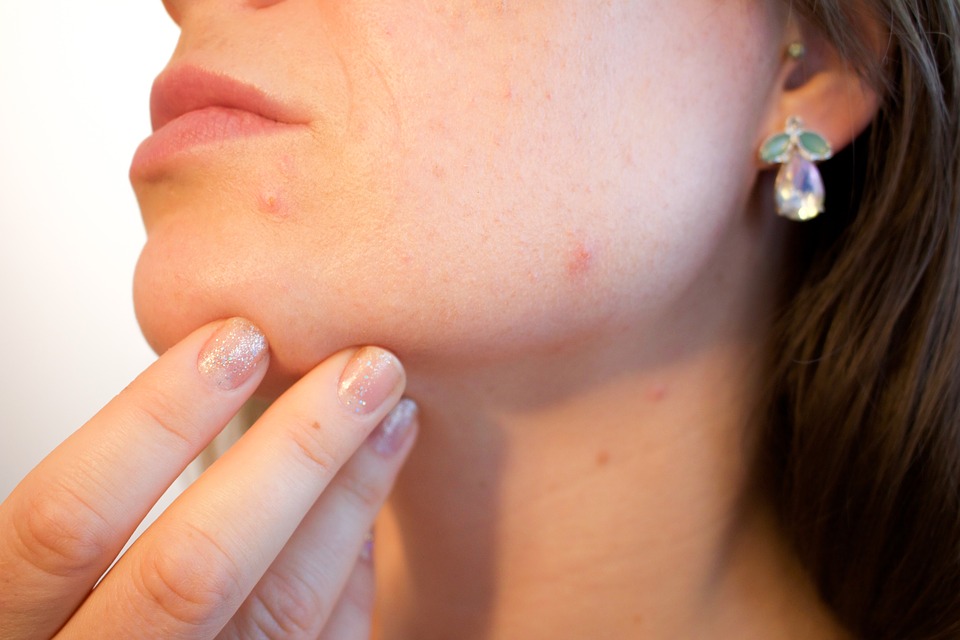Disclosure: This article may contain affiliate links. If you decide to make a purchase, I may make a small commission at no extra cost to you.
You’ve probably heard of this wonder herb called Saw Palmetto before. It’s widely talked about in hair loss talk forums; some people claiming to have success while others haven’t had such luck. So, does saw palmetto work for hair loss? The short answer is that saw palmetto works for hair loss in some people, and I’ll go into why in just a moment.

Why does saw palmetto work for some people?
Some people are just more prone to the effects of DHT, and this has a lot to do with their genetics. There are also other factors, such as diet, smoking, mental health, as well as certain other hormones which can affect the success of treatments aimed at reducing the level of DHT to stop hair loss.
One study showed that higher levels of IGF-1 in patients treated with Propecia experienced better results over a 12 month period, whereas those who experienced a drop in IGF-1 did not improve and some got worse!
One way to increase IGF-1 is to take a protein supplement, like whey protein. I talk about this in my post, supplements that support hair growth.
Benefits of saw palmetto for hair loss
Saw palmetto is an extract from the fruit of a plant known as Serenoa Repens, and its magic for hair loss comes from a plant sterol known as beta-sitosterol. In both men and women, we have an enzyme called 5-alpha-reductase, which converts a small amount of the available testosterone to a very potent androgen called dihydrotestosterone (DHT).
It’s been found in studies that this plant sterol is able to inhibit this enzyme which is responsible for testosterone being converted to DHT, and therefore reduce the damage to hair follicles that are sensitive to this androgen.
One preliminary study showed that a combination of saw palmetto and astaxanthin (a carotenoid found in foods such as salmon, lobster, krill, algae, among other sources. This study was conducted in vitro, but astaxanthin is readily absorbed and utilized by the body, so it would be a great addition to preventing hair loss from DHT.
In another double-blind placebo-controlled trial to determine whether or not saw palmetto worked for men suffering from androgenetic alopecia, 60% of the men in the treatment group reported an improvement upon their final visit.
Other health benefits of taking saw palmetto
Saw palmetto is a herb that is not just great for treating hair loss, it can also improve and treat other conditions such as:
- Chronic pelvic pain syndrome
- Prostate enlargement
- Reduce the risk of prostate cancer
Saw palmetto hair loss dosage
Saw palmetto is a really safe herb to take, and for it to be effective for hair loss you would need to take at least 200 mg, twice a day. A well-standardized extract containing 320 mg of sterols is one by Sonora Nutrition. This should be enough to see a result, so just start at a capsule of saw palmetto one a day.
This product combines many different ingredients to act synergistically with saw palmetto to block DHT.
Zinc – low levels of zinc can cause more testosterone to be converted into DHT, which is bad for your hair. Many people are also deficient in zinc. Those who are at most risk are vegans and vegetarians, and those who eat a lot of plant foods, as they are high in copper, which decreases absorption of zinc. One of the best forms of zinc for hair loss is zinc picolinate.
Green Tea – EGCG – the main active component of green tea – has been found to inhibit 5-alpha-reductase type 1, thus lowering DHT production. Green tea also helps block inflammation and reduces scarring, which is good because that is one of the reasons why hair won’t grow back.
Stinging Nettle – Often drank as a tea, this supports prostate health, reduces DHT and estrogen in men.
Probiotics – As mentioned in one of my other articles, our microbiome is very important in the growth cycle of hair. Check out the best probiotics for hair growth here. If you’ve ever taken antibiotics before, or if you have a bad diet, then it’s possible that you have a microbiome which is not good and taking a probiotic could restore the balance of healthy and bad bacteria.
.This supplement also contains other ingredients which are thought to help block DHT and improve hair growth. These compounds all act synergistically together, and they all have some evidence which proves their efficacy in reducing DHT and improving hair growth in men who are suffering from androgenetic alopecia.
Saw palmetto side effects in men
Saw palmetto is very well tolerated and side effects are rare and completely reversible. Side effects may include nausea, headache, insomnia, muscle pain, and depression. If you have any of these side effects, discontinue and speak with your doctor.
Some men may experience shedding when they begin a hair loss regimen. Hair fall is common when there is a sudden change in hormone levels. This can be a sign that the treatment is working. Don’t panic, because, within a few months, new and better quality hair will grow back. Check out my tips on how to grow hair faster for men, so you can improve your hair growth.
When I started taking supplements to block DHT, I noticed that my hair would fall out, but grow back much thicker and stronger as time went on. This can take a few cycles before things stabilize and you see the maximum improvement possible. For example, men who take finasteride improve 2 years after treatment. A few men continue to improve for up to 10 years
Can women take saw palmetto for hair loss?
Studies have been undertaken to look at the effect of blocking DHT in women who have been diagnosed with androgenetic alopecia, but the results say that even powerful medications such as Propecia are not effective.
Women who use other medications for hair loss, such as spironolactone have seen more positive results. So I do not recommend saw palmetto for women with hair loss due to androgenetic alopecia.
Children should not take saw palmetto.
Saw palmetto research for hair loss
Saw Palmetto has been studied for years and has a good safety profile compared to medications such as finasteride. Men who take finasteride are at risk of various side effects from taking the drug long-term, which is why some men are looking for something more natural and less risky.
In a study conducted in 2012, researchers compared finasteride with saw palmetto and the results were as expected, in that finasteride was more powerful and not only treated frontal hair loss and hair loss at the top of the head, but men who took saw palmetto for hair loss saw increased hair growth, more so at the vertex.
And as mentioned already, one earlier study conducted in 2002, saw that 60% of the men taking saw palmetto had a highly positive response to taking the supplement. The men in the study were between 23 and 64 years of age.
So, there is clearly research to show that saw palmetto does have some efficacy in treating hair loss in men. However, more research needs to be done. For now, at least, it’s a good alternative to drugs like finasteride.
Is taking saw palmetto worth it?
If you’re still wondering if saw palmetto works for hair loss, you simply have to just try it for yourself and then wait for a few months, even up to a year to see the results. Saw palmetto is a useful supplement to take for hair loss if you are also addressing the problem in other ways.
Saw Palmetto by itself is by no means a magical cure, but when combined with other ingredients, it will be much more effective in combating hair loss in men.
Develop a strategy that is specific to your needs and your problem.
I would recommend for anyone suffering from male pattern baldness to try out saw palmetto for at least 6 months, in combination with a healthy diet, exercise routine and perhaps a standard multivitamin.
If you have any questions related to saw palmetto and hair loss, please shoot me an email or leave a comment! 🙂
REFERENCES
1. The expression of insulin-like growth factor 1 in follicular dermal papillae correlates with therapeutic efficacy of finasteride in androgenetic alopecia. http://www.ncbi.nlm.nih.gov/pubmed/12894070
2. A preliminary investigation of the enzymatic inhibition of 5alpha-reduction and growth of prostatic carcinoma cell line LNCap-FGC by natural astaxanthin and Saw Palmetto lipid extract in vitro. http://www.ncbi.nlm.nih.gov/pubmed/16093232
3. The comparative effectiveness of finasteride vs Serenoa repens in male androgenetic alopecia: a two-year study. http://www.ncbi.nlm.nih.gov/pubmed/23298508





No Comments